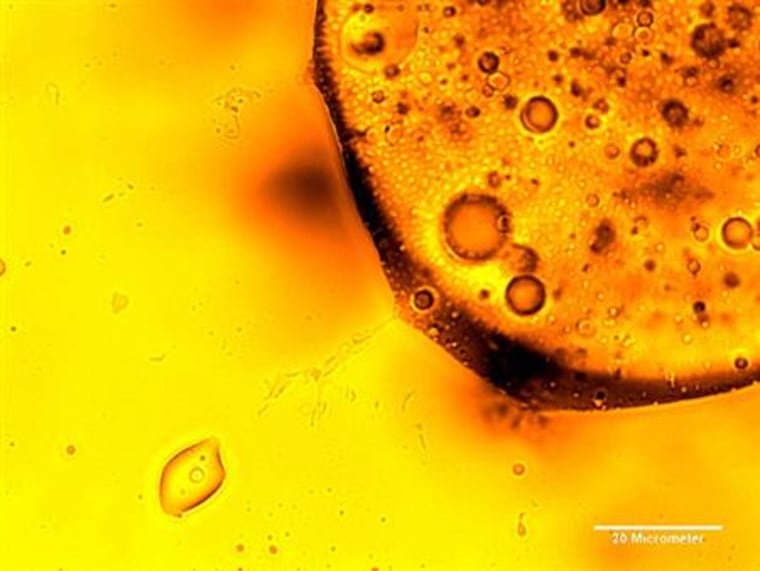As tragic as the BP oil spill was, it also provided scientists with a real-world way to test just how dangerous methane released into the seas might impact climate. The answer: Not very, assuming what happened in the Gulf happens elsewhere.
And what happened surprised the researchers: Natural bacteria known to thrive on hydrocarbons gobbled up the methane at an astonishing rate.
"They did a good job on it and that was much earlier than expected," said John Kessler, a chemical oceanographer at Texas A&M University.
He and others reported their findings Thursday in the peer-reviewed journal Science.
In fact, the bacteria ate nearly all the potentially climate-warming methane that spewed from BP's broken wellhead.
Nearly 200,000 tons of methane — more than any other single hydrocarbon emitted in the accident — were released, and nearly all of it went into the deep water, said co-researcher David Valentine of the University of California-Santa Barbara.
Bacteria managed to take in the methane before it could rise from the sea bottom and be released into the atmosphere.
The process contributed to a loss of about 1 million tons of dissolved oxygen in areas southwest of the well. That sounds like a lot of oxygen loss, but it was widely spread out, so that the bacterial munching did not contribute to a life-sapping low-oxygen condition known as hypoxia, said Valentine.
What happens to methane has been a key question for climate scientists, because methane is over 20 times more effective at trapping heat in the atmosphere than carbon dioxide. Like carbon dioxide, methane comes from natural and human-made sources, including the petroleum industry.
For two months after the BP blowout on April 20 methane was not being consumed in and around the wellhead, leading some scientists to suspect it might linger in the water and eventually make its way into the air, where it could potentially trap heat and contribute to climate change.
"If you have a very large release of methane like this, and it did make it into the atmosphere, that would be a problem," Valentine said. "There have been a number of ... large-scale methane releases in the past that have come from the ocean that have warmed the climate."
Those methane releases came from natural sources, and researchers like Valentine and his co-authors wondered what role bacteria might have had in those cases.
The BP spill offered an "accidental experiment" that showed particular bacteria with an all-methane diet multiplied quickly as the methane spread with the underwater plume from the broken well. Peak consumption of methane probably came in late July and early August, Valentine said.
Other organisms dealt with other hydrocarbons, including ethane and propane emitted in the worst offshore oil spill in U.S. history. The methane-eating bacteria were the last to the hydrocarbon banquet, and based on past observation, the scientists questioned whether they could do the job.
"Given observations about how slowly methane is normally consumed, we didn't think the (bacteria) population was up to the challenge at all ... we thought it would be a lot slower," Valentine said.
The fact the bacteria took in that large amount of methane could indicate that bacteria might absorb other large-scale deep ocean methane releases, the scientists said.
The findings don't demote methane from a key warming gas, however, since it's possible methane releases in warmer or shallower seas might not be attacked as quickly by the bacteria.
Moreover, vast deposits of methane are locked up under permafrost in the Arctic. Some areas are thawing quickly, leading to fears of methane releases from those locations, where the bacteria do not thrive.
